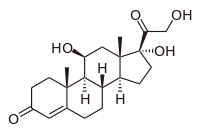
Bioengineered 3D Skeletal Muscle Model Reveals Complement 4b as a Cell‐Autonomous Mechanism of Impaired Regeneration with Aging
Sign Up to like & getrecommendations! Published in 2023 at "Advanced Materials"
DOI: 10.1002/adma.202207443
Abstract: A mechanistic understanding of cell‐autonomous skeletal muscle changes after injury can lead to novel interventions to improve functional recovery in an aged population. However, major knowledge gaps persist owing to limitations of traditional biological aging… read more here.
Keywords: regeneration; bioengineered skeletal; cell autonomous; muscle ... See more keywords

FHOD‐1 is the only formin in Caenorhabditis elegans that promotes striated muscle growth and Z‐line organization in a cell autonomous manner
Sign Up to like & getrecommendations! Published in 2020 at "Cytoskeleton"
DOI: 10.1002/cm.21639
Abstract: The striated body wall muscles of Caenorhabditis elegans are a simple model for sarcomere assembly. Previously, we observed deletion mutants for two formin genes, fhod‐1 and cyk‐1, develop thin muscles with abnormal dense bodies (the… read more here.
Keywords: muscle; cyk; autonomous manner; cell autonomous ... See more keywords

Cdk5 activity is required for Purkinje cell dendritic growth in cell‐autonomous and non‐cell‐autonomous manners
Sign Up to like & getrecommendations! Published in 2017 at "Developmental Neurobiology"
DOI: 10.1002/dneu.22507
Abstract: Cyclin‐dependent kinase 5 (Cdk5) is recognized as a unique member among other Cdks due to its versatile roles in many biochemical processes in the nervous system. The proper development of neuronal dendrites is required for… read more here.
Keywords: purkinje cell; cell autonomous; purkinje; cdk5 activity ... See more keywords

Frontline Science: Autophagy is a cell autonomous effector mechanism mediated by NLRP3 to control Trypanosoma cruzi infection
Sign Up to like & getrecommendations! Published in 2019 at "Journal of Leukocyte Biology"
DOI: 10.1002/jlb.hi1118-461r
Abstract: Autophagy and inflammasome activation are cell‐autonomous and cross‐regulated processes involved in host resistance against infections. Our group previously described that NLRP3 inflammasome is required for the control of Trypanosoma cruzi, the causative agent of Chagas… read more here.
Keywords: effector mechanism; control trypanosoma; control; trypanosoma cruzi ... See more keywords

Mutant TDP-43 Expression Triggers TDP-43 Pathology and Cell Autonomous Effects on Primary Astrocytes: Implications for Non-cell Autonomous Pathology in ALS
Sign Up to like & getrecommendations! Published in 2020 at "Neurochemical Research"
DOI: 10.1007/s11064-020-03048-5
Abstract: Motor neuron degeneration in amyotrophic lateral sclerosis (ALS) caused by mutations in superoxide dismutase 1 (SOD1) is partly non-cell autonomous, involving cellular dysfunction of astrocytes. Whether non-cell autonomous effects occur in other forms of ALS,… read more here.
Keywords: mutant tdp; tdp; non cell; pathology ... See more keywords

Non-cell-autonomous disruption of nuclear architecture as a potential cause of COVID-19-induced anosmia
Sign Up to like & getrecommendations! Published in 2022 at "Cell"
DOI: 10.1016/j.cell.2022.01.024
Abstract: SARS-CoV-2 infects less than 1% of cells in the human body, yet it can cause severe damage in a variety of organs. Thus, deciphering the non-cell autonomous effects of SARS-CoV-2 infection is imperative for understanding… read more here.
Keywords: sars cov; cell autonomous; non cell; disruption ... See more keywords

Cell-Autonomous Control of Neuronal Dendrite Expansion via the Fatty Acid Synthesis Regulator SREBP.
Sign Up to like & getrecommendations! Published in 2017 at "Cell reports"
DOI: 10.1016/j.celrep.2017.11.069
Abstract: During differentiation, neurons require a high lipid supply for membrane formation as they elaborate complex dendritic morphologies. While glia-derived lipids support neuronal growth during development, the importance of cell-autonomous lipid production for dendrite formation has been… read more here.
Keywords: production; dendrite expansion; fatty acid; srebp ... See more keywords

CRISPR/Cas9 system-mediated impairment of synaptobrevin/VAMP function in postmitotic hippocampal neurons
Sign Up to like & getrecommendations! Published in 2017 at "Journal of Neuroscience Methods"
DOI: 10.1016/j.jneumeth.2016.12.015
Abstract: BACKGROUND The use of the CRISPR/Cas9 system is becoming widespread, however current studies have predominantly focused on dividing cells. It is currently unknown if CRISPR/Cas9 can be used in a postmitotic setting to examine non-cell… read more here.
Keywords: crispr cas9; non cell; cas9 system; cell autonomous ... See more keywords

A Novel Transgenic Mouse Model to Investigate the Cell-Autonomous Effects of torsinA(ΔE) Expression in Striatal Output Neurons
Sign Up to like & getrecommendations! Published in 2019 at "Neuroscience"
DOI: 10.1016/j.neuroscience.2019.09.007
Abstract: Dystonia is a disabling neurological syndrome characterized by abnormal movements and postures that result from intermittent or sustained involuntary muscle contractions; mutations of DYT1/TOR1A are the most common cause of childhood-onset, generalized, inherited dystonia. Patient… read more here.
Keywords: expression; cell autonomous; mouse model; mouse ... See more keywords

Non-cell-autonomous pathogenic mechanisms in amyotrophic lateral sclerosis
Sign Up to like & getrecommendations! Published in 2021 at "Trends in Neurosciences"
DOI: 10.1016/j.tins.2021.04.008
Abstract: Amyotrophic lateral sclerosis (ALS) is the most common adult-onset paralytic disorder, characterized mainly by a loss of motor neurons (MNs) in the CNS. Over the past decades, thanks to intense investigations performed in both in… read more here.
Keywords: non cell; amyotrophic lateral; cell autonomous; autonomous pathogenic ... See more keywords

MyD88 promotes myoblast fusion in a cell-autonomous manner
Sign Up to like & getrecommendations! Published in 2017 at "Nature Communications"
DOI: 10.1038/s41467-017-01866-w
Abstract: Myoblast fusion is an indispensable step for skeletal muscle development, postnatal growth, and regeneration. Myeloid differentiation primary response gene 88 (MyD88) is an adaptor protein that mediates Toll-like receptors and interleukin-1 receptor signaling. Here we… read more here.
Keywords: skeletal muscle; cell autonomous; fusion; myoblast fusion ... See more keywords